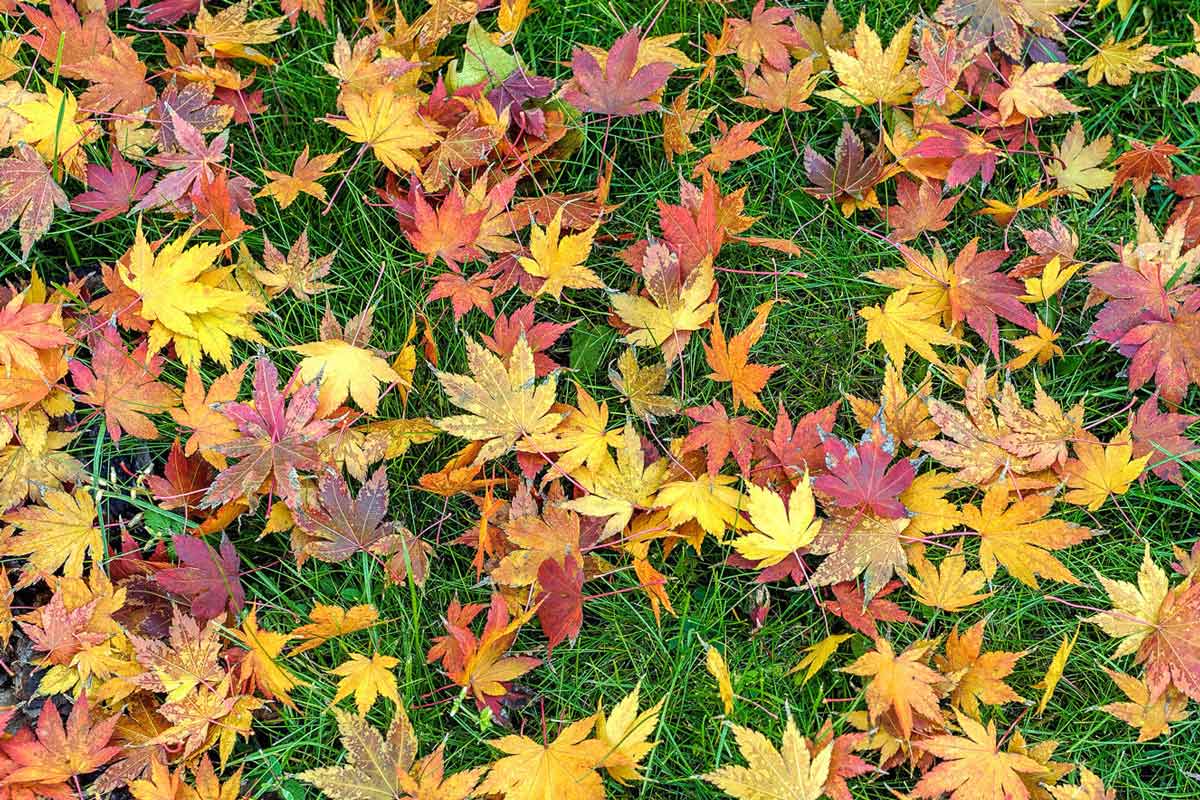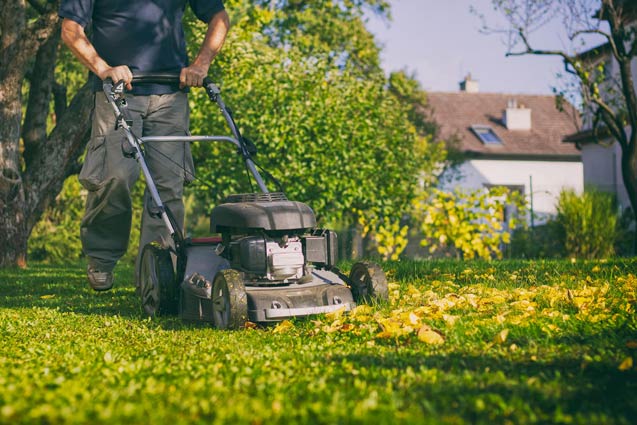4 Landscape Jobs to Skip this Fall
Though it may feel like there are a lot of tasks to complete in your landscape once fall arrives, there is a handful of them you can skip.
Why It’s Good to Leave the Leaves

Fall leaves are a valuable resource, useful for replenishing a lawn or garden. And they’re free!
As autumn rolls in, gardeners everywhere face the same question: What should I do with all these fallen leaves? While it may be tempting to rake, blow, bag, and haul them away, nature has already designed leaves to play an important role in the garden ecosystem As they break down leaves decompose to benefit plants and the soil, making them a valuable – and free – resource instead of “nature’s trash”. But is leaving them always the best choice? Let’s dig into the benefits, drawbacks, and best practices so you can decide what’s right for your lawn and garden beds.
Fallen leaves provide a protective layer that suppresses weeds, retains soil moisture, and moderates soil temperature to insulate plants—just like store-bought mulch, but free!
When leaves from trees and shrubs drop and decompose, they add nutrition and organic matter gradually to the soil, feeding your soil with essential nutrients. Leaves are one of the main ingredients that Nature uses to create soil. Over time, decomposed leaves improve soil structure, making it richer and easier to work with.
Many pollinators and beneficial insects—like butterflies, moths, and ladybugs—rely on leaf litter to overwinter. Leaving some leaves creates safe havens for the tiny creatures that help your garden thrive.
Yes—but only if they’re managed properly. Leaving a thin layer of shredded leaves can feed your lawn by returning nutrients to the soil. A thick, whole layer, however, can suffocate grass and invite disease. Run over them with a mower first to create a light mulch.
Absolutely. A 2–3 inch layer of leaves protects roots, conserves moisture, and suppresses weeds.
Yes! Shredded leaves are one of the most versatile mulches available. They’re easy to spread, quick to decompose, and deliver nutrients as they break down—at no cost to you.
Definitely. Leaves are one of the best “browns” you can add to compost.
Pro tips: Leaves break down faster if they are shredded before adding to compost. If you have more leaves than you can use right away, shred and bag some to add gradually throughout the year.
Yes. If leaves show signs of disease—like mildew, rust, or black spots—don’t use them as mulch or compost. And never leave thick mats of whole leaves on your lawn, as they block air and sunlight.
Absolutely. Many beneficial insects, such as butterflies, moths, and ladybugs, rely on leaf litter to survive the winter. By leaving some leaves undisturbed in quiet corners of your yard, you create valuable habitat that helps your garden’s ecosystem thrive.

In fall, don’t rake leaves — mow them. A mulching mower can chop leaves into bits which form a fast-decaying mulch that feeds the grass.
So, should you leave fallen leaves in your lawn and garden beds?
Yes—with a little strategy. Shredded or composted leaves are a gardener’s best friend, enriching soil and protecting plants. Whole leaves can be useful in beds if applied loosely, while shredded leaves are the most versatile option for mulching and composting. By finding a balance—mulching some, composting others, and leaving a few for wildlife—you’ll turn autumn cleanup into a win for your garden.